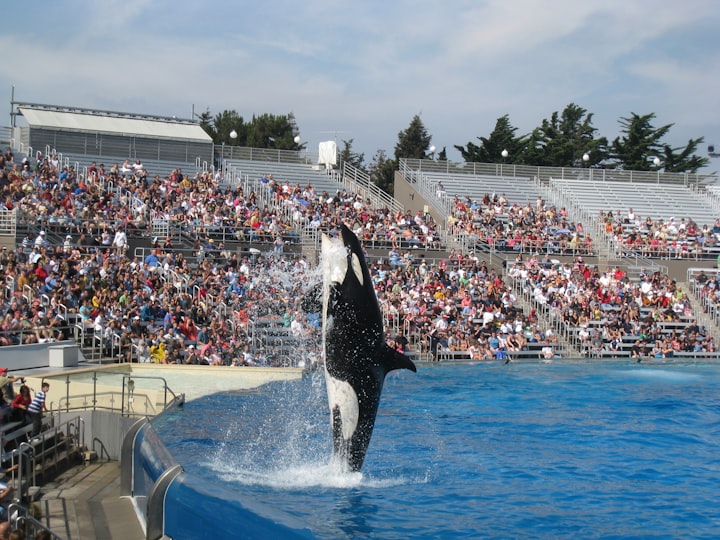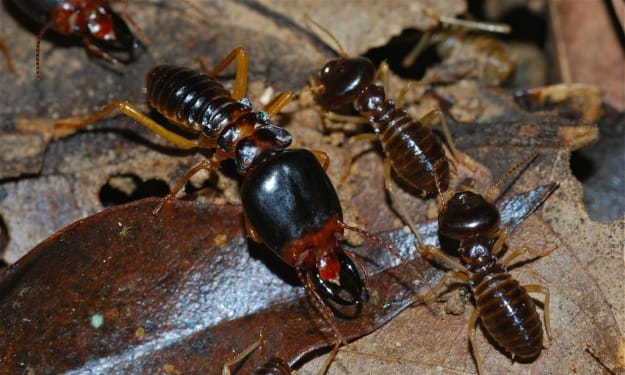Anti-Zoo Extremists Go To Washington?
The radical Animal Welfare Institute introduced legislation that would ban the keeping of cetaceans in human care.

On July 26th, anti-zoo extremists based at the Animal Welfare Institute announced new and extreme legislation that targets the marine mammal community. The bill titled the “Strengthening Welfare in Marine Settings (SWIMS) Act would phase out the keeping of cetaceans in human care for any purpose. The animals targeted in the bill include killer whales (orcas), beluga whales, pilot whales, and false killer whales by forbidding facilities from ever raising them under their care. This includes breeding them, transporting them to other facilities, and housing them for public display. While it allowed existing facilities to continue caring for the animals who live under their care, it would force them to phase out their animal programs.
The bill is being praised by the animal rights industry as potentially enabling zoos and aquariums to focus on other alternatives. Yet, there are a handful of experts who have several concerns about this legislation and how it might do more harm to marine mammals than good.
Here are their reasons.
1. There are laws in place to protect marine mammals.
This new legislation almost ignores the three laws that are already put in place to protect cetaceans and other marine mammals in both wild and zoological settings. The first of which is the Animal Welfare Act. It was first established in 1966 to regulate the sale of cats and dogs by ensuring their humane treatment. By the early ’70s, it was expanded to include animals in other settings such as research. Then, in 1979, the care and maintenance of marine mammals in zoological settings were added for regulation under this law. Currently, it’s administered by the Animal and Plant Health Inspection Service (APHIS) under the U.S. Department of Agriculture. Twice a year, inspectors, who are mainly veterinarians, visit facilities to see how well they’re following Animal Welfare Act regulations. These facilities require a license to keep the animals under their care and be regularly inspected by APHIS.
Another law that’s put in place to protect marine mammals is the Marine Mammal Protection Act. It was first established in 1972 to make it illegal for anyone to harass, hunt, capture, collect or kill marine mammals in United States waters. Examples of such violations include feeding wild dolphins, disrupting rookeries where seals and sea lions breed for photo opportunities, and whale deaths relating to shipping strikes.
The law recognizes and supports the value of marine mammal facilities. Under the Marine Mammal Protection Act, facilities have to be open to the public regularly; they’re required to offer educational programs that meet professionally recognized standards and be licensed by APHIS. This is how and why some facilities can operate working marine mammal hospitals whenever strandings happen. It’s because zoos and aquariums comprise a large part of a national stranding network that helps in dealing with strandings or unusual mortality events. While the federal government’s role in the operation of marine mammal facilities is limited, it’s the primary custodian of the Marine Mammal Inventory of dolphins and other cetaceans in human care and requires facilities to notify them of any transports that occur.
A third and final law that’s applied to marine mammals in the United States is the Endangered Species Act of 1973. This law protected threatened and endangered species from becoming extinct by protecting them and their habitats. While not all marine mammals are endangered, several species such as the vaquita, the Hawaiian monk seal, the North Atlantic right whale, and the polar bear are listed. This law has helped enable efforts to understand these animals through research, and conservation efforts by working to establish critical habitats to help them survive out in the wild. This also includes public outreach programs, many of them, created by zoos and aquariums to empower the public to do their part in preserving wild habitats.
No orca has been collected from United States waters since the mid-1970s. No orca that has been collected from international waters has been imported into the United States since the mid-1980s. 1989 was the last time a US facility could import newly collected cetaceans from international waters. Currently, most cetaceans living in US facilities have either been rescued or have been born in human care. The only animals that can be imported into the US were born or rescued by other facilities overseas.
2. The creators of the legislation have no animal care experience with marine mammals in zoological settings.
When I looked up the creators of the SWIM bill, I saw a common ground that they hold when taking their backgrounds into consideration. Sen. Dianne Feinstein (D-CA) and Reps. Adam Schiff (D-CA), Jared Huffman (D-CA), and Suzan DelBene (D-WA), the politicians behind SWIM, lack any experience with marine mammals in modern zoological facilities. While one of them did some environmental work in the mid-to-late 2000s, that doesn’t give them the extra hand to police modern facilities that house cetaceans.
3. The legislation still puts too much emphasis on habitat size at modern facilities.
In a statement about the legislation, Dr.Naomi Rose insisted that the current animal habitats that house cetaceans cannot provide “large spaces” for large species such as killer whales. While it’s true that these mammals swim about one hundred miles a day because they’re forced to do so in order to search for various prey they feed on, depending on ecotype. However, if they’re able to find food in shallow areas, then they would not need to go out to sea and dive into deeper waters to search for food. As a result, they would stay in that area year-round.
As for killer whales in human care, since they live in pools that have almost up to 22.5 million liters of water in a habitat is equivalent to 15 Olympic-size pools, the animals do not need to swim great lengths to search for food since their physiological needs are already being met by the human members of their pod. This is fulfilled through a series of routines that involve feeding sessions, play sessions with both other whales and with their human caregivers, training sessions, and husbandry sessions.
While there’s no arguing that space is a consideration when talking about animal welfare for any species in zoological settings, how cetaceans use space and the aspects of how it reinforces their wellbeing can also play a role in ensuring a positive quality of life in human care.
4. Too much overestimation of cetacean intelligence
When reading about cetacean behavior, we read about how certain species live in groups called pods. Yet, the way the pods are structured depends on the species and the ecotypes. For example, the social structure of pilot whales comprises 25-50 animals that have one adult male for every eight adult females. The males will leave their birth pod upon adolescence while their sisters will stay with the pod for life. False killer whales form strong social bonds with other animals that last several years. Beluga whales form multi-scale societies that could be of either mother-calf dyads or entire communities that hunt and migrate together.
However, killer whale society differs from the social structures of these three species because of the social hierarchies that are led by older females and several generations of their immediate families. This includes sons, daughters, offspring of the daughters, siblings, cousins, uncles, aunts, nephews, and nieces. These pods rely on the experience of mothers and grandmothers to locate areas for feeding in areas where they’ve hunted for generations to ensure their survival. While there are no studies that measured the effect maternal care has on a killer whale’s well-being in a zoological setting, orcas have formed bonds outside of their natal pods.
While the social structures of these four species might be similar, they’re not the same and developed to work for different reasons. If a cetacean in human care is in an established social structure that meets their needs and ensures their wellbeing the animal is thriving under such care.
Yet, intelligence goes far beyond social bonds between animals though. In both the wild and in zoological settings, both killer whales and bottlenose dolphins engage in vocal learning and copy and use the vocal calls of other animals.
Keep in mind that there’s no to measure personhood in animals. This includes cetaceans.
5. The legislation only favors activist-operated sanctuaries
Let’s say this legislation gets signed into law and takes effect. Facilities that are now forced to end their cetacean programs could not send their animals to scientifically accredited facilities in Europe. That is because the legislation would prohibit a facility from being able to do so. Instead, they would be forced to send them to sanctuaries that are primarily operated by animal rights extremist groups. While there’s one beluga facility in Iceland that’s been recognized as a sanctuary, the facility has had some issues such as the questionable location of the pen, the lack of whale conservation laws, and not being able to offer a home to a beluga whale in Norway.
Currently, activists in Canada are hoping to open their own facility and pass it off as a sanctuary. However, there are concerns about the sea pen being in an area that has a long history of pollution that might threaten animal lives if it were to come into fruition. There are other concerns over the location such as the possibility of disrupting a nearby bird sanctuary, the well-being of the potential resident animals in question, and the possibility of how the netting might not do well in bad weather.
If most of the cetacean intake were born under human care or rescued and the facility they live were to phase out their cetacean programs, instead of requiring these facilities to send their animals to sanctuaries that are not well-equipped with the practices that are required under the Animal Welfare Act and the USDA to provide the care for them. This is a double standard to say that one accredited facility can’t send their animals to another accredited facility to continue receiving the same amount of care they were getting at the previous facility while being okay with sending them to a sanctuary in which most of the staff have little-to-no expertise in cetacean husbandry and care in a modern facility.
6. The ability to let animals breed in zoological settings is promoting animal welfare
When keeping any wild in a modern zoological setting, one foundation to ensure they thrive under the care of man is giving healthy animals a chance to procreate. While not all facilities choose not to breed their animals for health and genetic reasons, many facilities choose to allow them to do so on their own terms. This is because cetaceans, especially killer whales, are sexual animals.
As one of the very few animal species that mate for other than to reproduce, toothed whales have developed an elegant form of sexual play that comprises of jumps, splashing, nuzzling, and rubbing each other’s genitals.
As for calf rearing in zoological facilities, it has been proven through the years that the breeding of cetaceans that results in healthy calves is good for the animals in question. If well-managed, calves can help promote a healthy pod dynamic that comprises animals of various ages. You have the adults, and then, you have the juveniles and young calves. These dynamics are also found out in wild settings among all toothed whale species. So, eliminating these dynamics or the chance to let healthy animals breed might cause accidents relating to sexual frustration.
Breeding also allows researchers the opportunities to learn about the maternity cycle of cetaceans that they would never have been able to get out of a wild study.
7. If the legislation goes into law, other species could be next.
For people who don’t work in zoological facilities that house marine mammals, they may wonder if told about the legislation “it won’t affect me because I don’t work with marine mammals”. News flash, if this ban becomes reality, then chances are, it could enable extremists to target other species next. This includes elephants, parrots, big cats, great apes, bears, reptiles, and horses. Speaking of horses, they might go after domesticated pets like cats and dogs.
This law might not affect someone who was or currently is a part of the marine zoological community but if extremists have their way, other animal species might be next. This could consequently slow down or halter all conservation efforts that require zoo and aquarium-based research and conservation programs.
8. The Focus should be on protecting wild populations and their shrinking habitats
If extremists and their politician supporters were truly concerned about the plight of marine wildlife, the focus should be on efforts that actually save wildlife in trouble. This includes protecting the Chinook salmon, a primary food source of the Southern Resident killer whale population, or holding the lobster industry accountable for right whale deaths off the New England Coast. They could even work to restore coral reefs that are affected by climate change off the Florida Keys, or maybe work to keep sea turtle nests safe from careless beachgoers.
Yes, there are bad facilities out there that don’t treat their animals well but the focus should be on either improving the current conditions of those facilities or moving their animals to better facilities if that’s not possible. A breeding ban wouldn’t solve this issue at all.
Tell your representative to say “no” to SWIMS because we can’t afford to ban the keeping of cetaceans in human care. Not when there are more important issues that this country needs to focus on.
About the Creator
Jenna Deedy
Zoo and Aquarium Professional, Educator, Cosplayer, Writer and B.A. in Psychology whose got a lot to share when it comes to animals, zoos, aquariums, conservation, and more.
Instagram: @jennacostadeedy






Comments
There are no comments for this story
Be the first to respond and start the conversation.